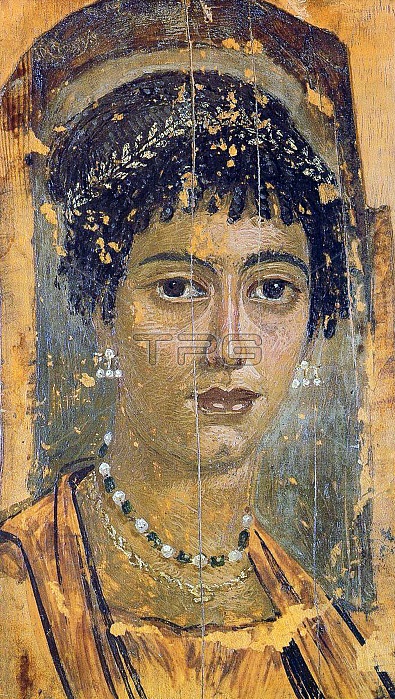
Mummy portraits or Fayum mummy portraits (also Faiyum mummy portraits) is the modern term given to a type of naturalistic painted portraits on wooden boards attached to mummies from the Coptic period. They belong to the tradition of panel painting, one of the most highly regarded forms of art in the Classical world. In fact, the Fayum portraits are the only large body of art from that tradition to have survived. Mummy portraits have been found across Egypt, but are most common in the Faiyum Basin, particularly from Hawara and Antinoopolis, hence the common name. 'Faiyum Portraits' is generally thought of as a stylistic, rather than a geographic, description. While painted Cartonnage mummy cases date back to pharaonic times, the Faiyum mummy portraits were an innovation dating to the Coptic period at the time of the Roman occupation of Egypt. They date to the Roman period, from the late 1st century BCE or the early 1st century CE onwards. It is not clear when their production ended, but recent research suggests the middle of the 3rd century. They are among the largest groups among the very few survivors of the highly prestigious panel painting tradition of the classical world, which was continued into Byzantine and Western traditions in the post-classical world, including the local tradition of Coptic iconography in Egypt.
| px | px | dpi | = | cm | x | cm | = | MB |
Details
Creative#:
TOP27330241
Source:
達志影像
Authorization Type:
RM
Release Information:
須由TPG 完整授權
Model Release:
No
Property Release:
No
Right to Privacy:
No
Same folder images:

 Loading
Loading